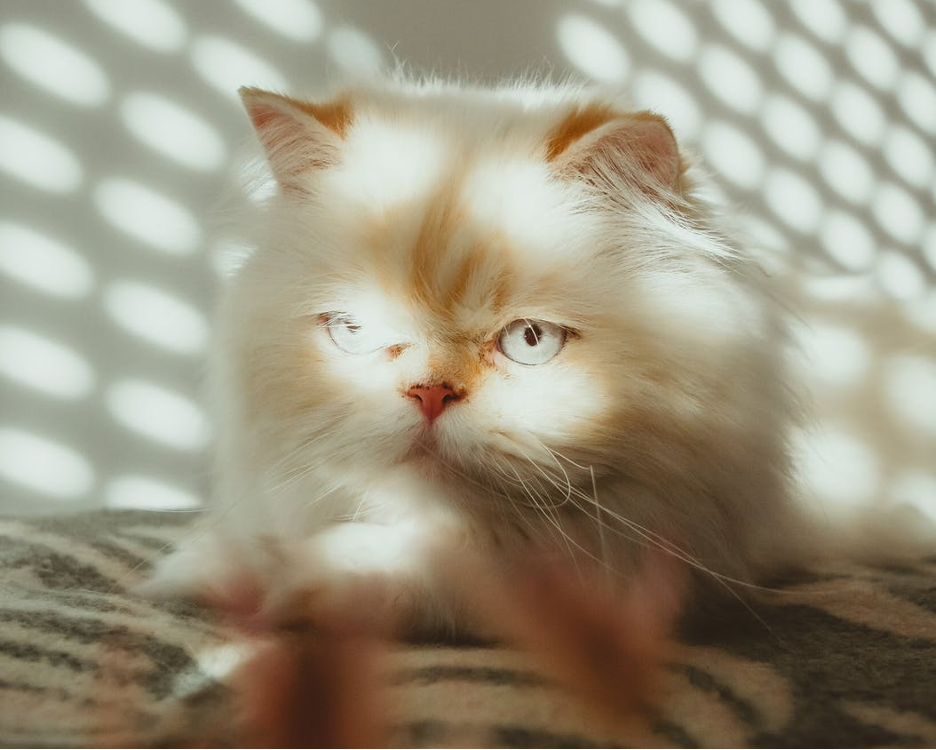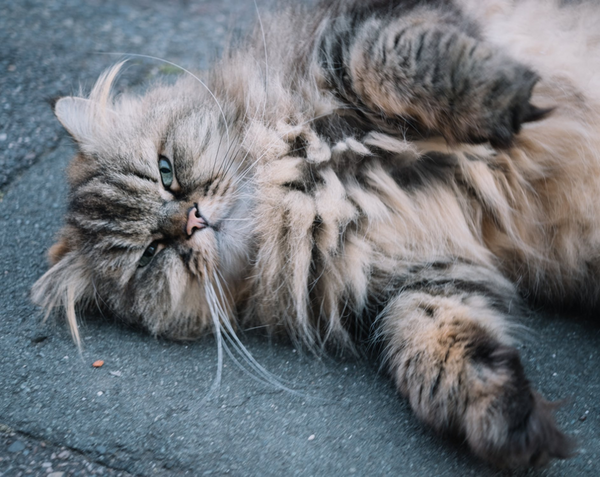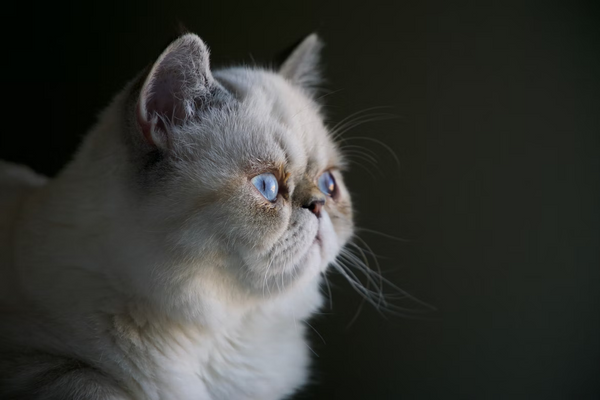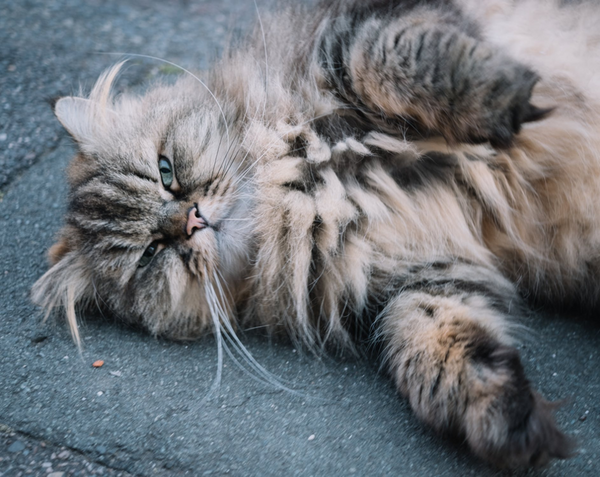Are you a proud owner of a beautiful Persian cat? If so, you may be well aware of the challenges that come along with their luxurious coat, including the dreaded seasonal shedding. Don’t worry, though, because in this article, we will explore some coping strategies to help you deal with this furry situation. Whether it’s tips for managing shedding during different seasons, advice on grooming techniques, or even recommendations for products that can alleviate shedding, we’ve got you covered. So, get ready to embrace your Persian cat’s majestic mane while keeping your home fur-free with these helpful tips and tricks.

Causes of Seasonal Shedding in Persian Cats
Hormonal Changes
One of the primary causes of seasonal shedding in Persian cats is hormonal changes. Just like humans, cats go through hormonal fluctuations throughout the year, which can affect their hair growth and shedding patterns. The change in daylight hours and the shifting of seasons can trigger the release of certain hormones in cats, leading to shedding.
Environmental Factors
Another factor that can contribute to seasonal shedding in Persian cats is the environment in which they live. Factors such as changes in temperature and humidity levels can influence a cat’s shedding patterns. For example, as the weather gets warmer, cats may shed their winter coat to adapt to the higher temperatures. Similarly, shifts in humidity levels can affect the moisture content in a cat’s fur, leading to increased shedding.
Seasonal Temperature Changes
The seasonal changes in temperature can also play a role in Persian cats shedding their hair. As the weather gets hotter, cats naturally shed their winter coat to keep cool. This shedding allows for the growth of a lighter and shorter summer coat, which is more suitable for warm weather. Similarly, when the temperatures start dropping, cats shed their summer coat to make room for a thicker and warmer winter coat.
Effects of Seasonal Shedding
Increased Hairballs
One of the main effects of seasonal shedding in Persian cats is an increase in the formation of hairballs. As cats groom themselves, they ingest a significant amount of fur. When shedding occurs, the amount of loose fur in their coat increases, leading to a higher likelihood of hairballs. Hairballs can be uncomfortable for cats and may cause digestive issues if not addressed.
Messy Fur Around the House
Seasonal shedding can also result in messy fur around the house. Persian cats have long and thick fur, which tends to shed more visibly compared to other cat breeds. During shedding season, you may notice stray hairs on furniture, carpets, and clothing. This can be challenging to manage and may require more frequent cleaning and grooming.
Potential Allergy Issues
For individuals who are allergic to cat dander, seasonal shedding in Persian cats can pose a problem. Shedding releases dander into the air, which can trigger allergies in sensitive individuals. The increase in shedding during certain seasons can exacerbate allergy symptoms, such as sneezing, itching, and respiratory issues. It is important to manage shedding to minimize allergens in the environment.
Understanding Persian Cat’s Fur
Long and Thick Coat
Persian cats are known for their long and thick coat, which requires regular grooming and maintenance. Their fur can grow up to six inches in length, making it one of the longest among cat breeds. The luxurious and dense coat is a defining characteristic of Persian cats and contributes to their unique appearance.
Double-layered Fur
Unlike some other cat breeds, Persian cats have a double-layered fur. The top layer, known as the guard hair, provides protection and acts as a barrier against external elements. The undercoat, on the other hand, offers insulation and helps regulate body temperature. Both layers play a role in shedding, as they shed at different rates and times throughout the year.
Difference from Other Cat Breeds
The fur of Persian cats sets them apart from many other cat breeds. While some cats may shed continuously throughout the year in small amounts, Persian cats have distinct shedding seasons due to their long and thick coat. The shedding can be more noticeable and require extra attention and care compared to cats with shorter fur. It is essential for Persian cat owners to understand their cat’s unique fur and take appropriate measures to manage shedding.
Grooming Techniques to Manage Shedding
Regular Brushing
Regular brushing is crucial for managing shedding in Persian cats. By brushing your cat’s fur regularly, you can remove loose and dead hair, preventing it from accumulating around the house. Use a high-quality grooming brush designed for long-haired cats and be gentle to avoid causing any discomfort or skin irritation.
Bathing for Excessive Shedding
In some cases of excessive shedding, bathing your Persian cat can help remove loose fur and promote healthy hair growth. However, it is important to note that Persian cats are not fond of water and may find the bathing process stressful. Use a cat-specific shampoo and make sure to dry your cat thoroughly after the bath to prevent further discomfort.
Using Deshedding Tools
Deshedding tools, such as grooming gloves or deshedding combs, can be effective in reducing shedding and removing loose fur. These tools are designed to reach the undercoat and remove loose hairs without causing any harm to your cat’s skin. Using deshedding tools regularly can significantly minimize shedding and keep your Persian cat’s coat in good condition.
Trimming the Fur
Trimming your Persian cat’s fur can be an option to minimize shedding, especially during the warmer months. By trimming the fur to a shorter length, you can reduce the amount of hair being shed. However, be cautious when trimming and consider seeking professional help if you’re not confident in your grooming skills.

Dietary Considerations for Minimizing Shedding
High-Quality Balanced Diet
Providing your Persian cat with a high-quality balanced diet is essential to promote overall health and minimize excessive shedding. Look for cat food that is specifically formulated for long-haired breeds and provides the necessary nutrients for healthy coat maintenance. Consult with your veterinarian to determine the best diet for your Persian cat’s specific needs.
Omega-3 Fatty Acids and Antioxidants
Incorporating omega-3 fatty acids and antioxidants into your Persian cat’s diet can help improve the condition of their skin and coat. These nutrients have been shown to reduce shedding and promote a shiny and healthy coat. Consult with your veterinarian to determine the appropriate dosage and sources of omega-3 fatty acids and antioxidants for your cat.
Avoiding Food Triggers
Some cats may have sensitivities or allergies to certain foods, which can trigger excessive shedding. Pay attention to your Persian cat’s diet and observe if certain ingredients lead to increased shedding. If you suspect a food trigger, consider eliminating that ingredient and consult with your veterinarian for alternative diet options.
Proper Hydration
Ensuring that your Persian cat is properly hydrated is important for maintaining healthy skin and coat. Provide fresh water at all times and consider incorporating wet cat food into their diet, as it contributes to overall hydration. Proper hydration can help minimize dryness and itchiness, which can contribute to shedding.
Creating a Comfortable Environment for Your Persian Cat
Maintaining Optimal Humidity
Persian cats thrive in environments with optimal humidity levels. Dry air can lead to dry skin, which can aggravate shedding. Use a humidifier or consider placing bowls of water around your home to increase humidity levels. Monitoring and maintaining a comfortable level of humidity can help minimize shedding and promote healthy skin and coat.
Controlling Indoor Temperature
Persian cats are sensitive to extreme temperatures, which can affect their shedding patterns. Maintain a consistent indoor temperature that is neither too hot nor too cold. Avoid exposing your cat to drafts or direct sunlight for prolonged periods, as these can cause stress and disrupt their natural shedding cycle.
Providing Clean and Comfortable Bedding
Creating a cozy and comfortable sleeping environment for your Persian cat can help minimize shedding. Use soft and washable bedding that is easy to keep clean. Regularly washing the bedding can remove loose fur and prevent it from spreading around the house.
Ensuring Proper Ventilation
Proper ventilation is important to prevent the buildup of allergens and irritants in your home, which can worsen shedding. Ensure that your home has adequate airflow and consider using air purifiers or opening windows to improve ventilation. This can help reduce the amount of airborne allergens and promote a healthier environment for your Persian cat.

Managing Seasonal Allergies in Persian Cats
Identifying Allergens
If your Persian cat experiences allergies, it is important to identify the specific allergens that trigger their symptoms. Common allergens for cats include pollen, dust mites, mold, and certain foods. By identifying the allergens, you can take appropriate measures to minimize exposure and manage your cat’s allergies effectively.
Avoiding Exposure
Once you have identified the allergens that affect your Persian cat, take steps to avoid their exposure. For example, if pollen is a trigger, limit your cat’s outdoor time during peak allergy seasons. Regularly clean and vacuum your home to reduce dust and allergen levels. Additionally, consider using allergen-resistant covers for your cat’s bedding and designated allergy-free zones within your home.
Regular Cleaning and Vacuuming
Regular cleaning and vacuuming are essential to manage seasonal allergies in Persian cats. Dust, pollen, and other allergens can accumulate on surfaces, furniture, and carpets. By maintaining a clean environment, you can reduce the allergen load and minimize your cat’s allergic reactions. Use pet-friendly cleaning products and consider using a vacuum with a HEPA filter for optimal results.
Consulting a Veterinarian
If your Persian cat’s seasonal allergies persist or worsen, it is important to consult a veterinarian. They can perform allergy tests to determine the specific allergens affecting your cat and recommend appropriate treatment options. Your veterinarian may suggest allergy medications, antihistamines, or immunotherapy to alleviate your cat’s symptoms and improve their quality of life.
Addressing Behavior Changes During Shedding Season
Increased Grooming Behavior
During shedding seasons, you may notice an increase in your Persian cat’s grooming behavior. This is a natural response as they try to remove loose fur from their coat. However, excessive grooming can lead to skin irritation or the formation of mats if not properly managed. Monitor your cat’s grooming habits and provide regular brushing to help remove loose fur and prevent discomfort.
Irritability or Restlessness
Some Persian cats may exhibit signs of irritability or restlessness during shedding seasons. The shedding process can be uncomfortable for them, leading to changes in behavior. Provide a calming and stress-free environment for your cat, ensuring they have a quiet and comfortable space where they can retreat to during shedding periods.
Changes in Appetite or Lethargy
In certain cases, shedding seasons can affect a Persian cat’s appetite or energy levels. They may experience a temporary decrease in appetite or become more lethargic. Monitor your cat’s eating habits and ensure they are still consuming an appropriate amount of food. If you notice any significant changes in appetite or energy levels, consult with your veterinarian for further evaluation and guidance.

Seeking Professional Help for Excessive Shedding
When to Consult a Veterinarian
While seasonal shedding is normal for Persian cats, excessive shedding may indicate an underlying issue. If you notice severe or prolonged shedding outside of the usual shedding seasons, it is recommended to consult a veterinarian. Excessive shedding can be a symptom of various health conditions, such as allergies, hormonal imbalances, nutritional deficiencies, or parasites.
Diagnostic Tests for Underlying Issues
To determine the cause of excessive shedding, your veterinarian may recommend diagnostic tests. These tests can include bloodwork, skin scrapings, or allergy testing. The results can help identify any underlying conditions that may be contributing to the excessive shedding and guide the appropriate treatment plan.
Medications or Supplements
In certain cases, your veterinarian may prescribe medications or supplements to manage excessive shedding in your Persian cat. Depending on the underlying cause, they may recommend antihistamines, corticosteroids, or specialized supplements to promote healthy skin and coat. Follow your veterinarian’s advice and dosage instructions carefully to ensure the best outcome for your cat.
Tips for Minimizing Shedding Around the House
Regular Cleaning Routine
Establishing a regular cleaning routine is essential for minimizing shedding around the house. Vacuum carpets, furniture, and curtains frequently to remove loose fur and allergens. Sweeping or mopping hard surfaces can also help prevent fur from accumulating. Additionally, dusting surfaces and using a lint roller to remove stray hairs from clothing and upholstery can significantly reduce shedding-related mess.
Using Lint Rollers and Sticky Tape
Lint rollers and sticky tape can be incredibly useful in removing loose fur from clothing and upholstery. Keep these tools handy in areas where your Persian cat spends time, such as your bedroom or living room. Regularly roll the lint roller or sticky tape over surfaces to pick up loose hairs and prevent them from spreading throughout the house.
Covering Furniture and Upholstery
To protect your furniture and upholstery from excessive shedding, consider using protective covers or throws. Choose materials that are easy to clean and washable, as they can help contain loose fur and prevent it from sticking to your furniture. This way, you can minimize the amount of cleaning required and maintain a more fur-free living space.
Limiting Access to Certain Areas
If certain areas of your home are prone to excessive shedding, consider limiting your Persian cat’s access to those areas. For example, you may want to keep them out of bedrooms or off of furniture to prevent the accumulation of fur. Use baby gates or closed doors to establish boundaries and create designated areas where shedding is easier to manage.

10 Common Questions About Persian Cats
-
How often should I brush my Persian cat to manage shedding?
- Brushing your Persian cat at least once a day is recommended to manage shedding effectively. However, frequency may vary depending on your cat’s individual needs and the shedding season.
-
Can I use human hair products on my Persian cat’s fur?
- No, it is not advisable to use human hair products on your Persian cat’s fur. Cats have different pH levels and their skin may be more sensitive to the ingredients found in human hair products. Use cat-specific grooming products recommended by veterinarians instead.
-
Should I shave my Persian cat to minimize shedding?
- Shaving a Persian cat’s fur is not necessary to minimize shedding. While trimming the fur can help, it is important to consult a professional groomer or veterinarian for proper trimming techniques and to ensure your cat’s safety and comfort.
-
How can I prevent hairballs in my Persian cat during shedding season?
- Regular grooming and brushing can help reduce the formation of hairballs in Persian cats. Additionally, providing hairball prevention treats or supplements, as recommended by your veterinarian, can help prevent hairball-related issues.
-
Can a healthy diet help minimize shedding in Persian cats?
- Yes, a healthy and balanced diet can contribute to minimizing shedding in Persian cats. Providing high-quality cat food that meets their nutritional needs can improve the condition of their coat and reduce excessive shedding.
-
Do all Persian cats shed the same amount?
- Each Persian cat is unique, and shedding can vary among individuals. Factors such as genetics, grooming practices, and overall health can influence the amount of shedding in Persian cats.
-
How can I tell if my Persian cat’s shedding is normal or excessive?
- If you notice a significant increase in shedding, bald patches, or your cat’s fur becoming dull and brittle, it may indicate excessive shedding. Consulting a veterinarian can help determine the underlying cause and appropriate measures to address the issue.
-
Can seasonal shedding in Persian cats be prevented entirely?
- Seasonal shedding is a natural process in Persian cats and cannot be completely prevented. However, proper grooming, a healthy diet, and ensuring a comfortable environment can help manage shedding and minimize its effects.
-
Should I be concerned if my Persian cat’s shedding is accompanied by skin irritation?
- If your Persian cat’s shedding is accompanied by signs of skin irritation, such as redness, itching, or sores, it is advisable to consult a veterinarian. This may indicate an underlying skin condition that requires treatment.
-
Are there any supplements or medications to reduce shedding in Persian cats?
- Certain supplements, such as omega-3 fatty acids, can help minimize shedding in Persian cats by improving the condition of their skin and coat. However, it is important to consult with a veterinarian before introducing any supplements or medications to your cat’s routine.
